Growing Calendula - How To Care For Calendula Plants In The Garden
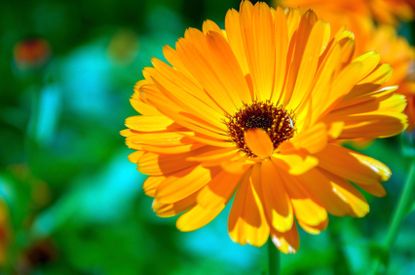

Bright yellow and orange flowers, historically used for medicinal and culinary purposes, come from easy calendula care when growing this simple flower. Commonly called the pot marigold (Calendula officinalis), the calendula flower has long been a staple in British cottage gardens.
Petals are used in cooking, and were used as yellow coloring in cheeses and butters in centuries past. When used in stews, broths and salads, these petals add a spicy taste similar to saffron to many dishes. All parts of calendula plants are useful in many ways.
The plant is said to stimulate the immune system and is currently used as an ingredient in many cosmetics. Flowers and leaves of the calendula may be dried and stored for later use. In the vegetable garden, calendula draws aphids away from valuable plants. While uses of calendula plants are diverse, growing calendula in the flower or herb garden is an optimum use of this attractive plant.
Calendula plants are frost tolerant and somewhat cold hardy and add long-lasting color and beauty in a flower bed or container.
How to Grow Calendulas
The calendula flower or flowering herb is an annual which will readily reseed. Too much calendula care can result in stunted or slow growth. Poor to average, well draining soil and only occasional watering after plants are established is the secret to growing prolific calendula plants.
Like most herbs, calendulas are adaptable and do not require a lot of maintenance. Roots will often adapt to the space provided. The amazing pot marigold can be grown in containers or beds in full sun to shade conditions. As the calendula prefers cool temperatures, flowers last longer in filtered sun or shady areas.
If deadheaded regularly, this plant can bloom from spring through fall and beyond. In warmer areas, the calendula may take a break from blooming during summer heat and then put on a show as temperatures fall in autumn. Regular pinching keeps the 1-3 foot (30-90 cm.) plant bushy and prevents tall, spindly stalks.
Gardening tips, videos, info and more delivered right to your inbox!
Sign up for the Gardening Know How newsletter today and receive a free download of our DIY eBook "Bring Your Garden Indoors: 13 DIY Projects For Fall And Winter".
Now that you've learned how to grow calendulas, take advantage of their long-lasting blooms in the herb garden or light shade area. Experiment with use of calendula flower petals to replace saffron in recipes.
If you are so inclined, use plant parts as a topical treatment for minor scrapes and cuts.

Becca Badgett was a regular contributor to Gardening Know How for ten years. Co-author of the book How to Grow an EMERGENCY Garden, Becca specializes in succulent and cactus gardening.
-
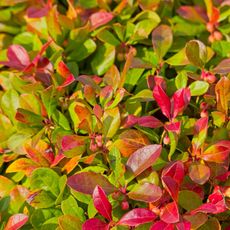 Holiday Evergreen Plants: 9 Unique Evergreens For Holiday Cheer That Can Last All Year!
Holiday Evergreen Plants: 9 Unique Evergreens For Holiday Cheer That Can Last All Year!Not all holiday evergreen plants conform to the traditional standard, so get ready to broaden your mind and brighten your festive spirits with these unique holiday evergreens
By Janey Goulding
-
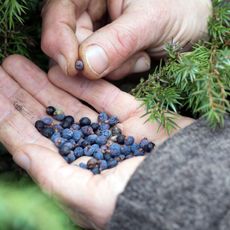 9 Wild Spice Plants To Try: Flavor-Packed Foraging To Spice Up Your Life
9 Wild Spice Plants To Try: Flavor-Packed Foraging To Spice Up Your LifeIf growing spices feels like a hit and miss affair, why not forage for spices growing in the wild? Here are 9 wild spice plants to add a dash of heat to your culinary exploits
By Bonnie L. Grant
-
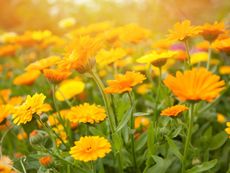 Common Diseases Of Calendula – How To Treat Sick Calendula Plants
Common Diseases Of Calendula – How To Treat Sick Calendula PlantsUseful to treat a variety of medical ailments calendula may be, but that doesn’t mean calendula doesn’t get its own share of plant diseases. Click this article to learn about diseases of calendula and managing diseased calendula plants.
By Amy Grant
-
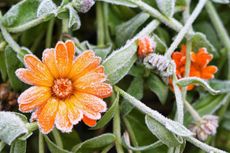 Calendula Winter Care – How To Keep Calendula Over Winter
Calendula Winter Care – How To Keep Calendula Over WinterAlthough some varieties are short-lived perennials in zones 8-10, most gardeners grow calendula as annuals. Calendula winter care isn't necessary when they are grown as annuals, but this article will discuss what to do with calendulas in winter.
By Darcy Larum
-
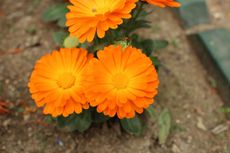 Common Calendula Problems – Learn About Calendula Pests And Diseases
Common Calendula Problems – Learn About Calendula Pests And DiseasesThere are 15 species in the calendula genus, each easy to grow and fairly problem free. That said, even low maintenance calendula has problems and does have its share of pests and diseases. The following article contains information to help with this.
By Amy Grant
-
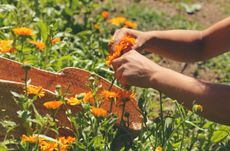 Guide To Calendula Deadheading – Removing Spent Calendula Flowers
Guide To Calendula Deadheading – Removing Spent Calendula FlowersWhile calendula deadheading isn't necessary, the process can improve the appearance of plants and make way for new buds to receive the sun's kiss. Some tips on how to deadhead a calendula will have your plant in season-long production. Learn more here.
By Bonnie L. Grant
-
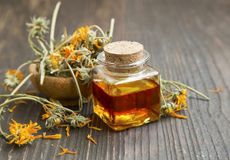 Calendula Oil Uses: Learn How To Make Calendula Oil
Calendula Oil Uses: Learn How To Make Calendula OilCalendula is certainly an important herb to have on hand. One of the simplest ways to take advantage of calendula's healing properties is by making calendula oil. Click on this article to learn how to make calendula oil for health and beauty.
By Darcy Larum
-
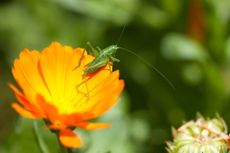 Bugs That Eat Calendula – Does Calendula Attract Pests To The Garden
Bugs That Eat Calendula – Does Calendula Attract Pests To The GardenWhile calendula grows like crazy with little effort on your part, the plants attract a number of good bugs, and are also susceptible to attack by certain harmful calendula pests. Click this article to learn more about the good, the bad and the ugly.
By Mary H. Dyer
-
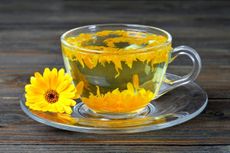 How To Make Calendula Tea – Growing And Harvesting Calendula For Tea
How To Make Calendula Tea – Growing And Harvesting Calendula For TeaA calendula flower is so much more than just a pretty face. Once you learn about calendula tea benefits, you'll have even more reasons to love this plant. If you are considering growing calendula for tea, then the following article will help.
By Teo Spengler
-
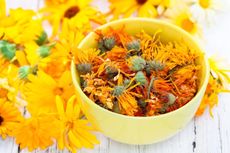 Common Calendula Uses: What To Do With Calendula Flowers
Common Calendula Uses: What To Do With Calendula FlowersNative to the Mediterranean, calendula is a plant that has been used medicinally for centuries. It's a pretty plant to grow in the garden, but there are also a lot of calendula uses that you could try. Learn more about what to do with calendula plants in this article.
By Mary Ellen Ellis